Visiting El Djem in Tunisia is fascinating! We just spent a week in Tunisia, and one of the most interesting visits we made was to the amphitheatre in El Djem. This well-preserved amphitheatre is one of the largest in the world and is also a UNESCO World Heritage Site.
Innehållsförteckning
The amphitheatre of El Djem in Tunisia
The amphitheatre at El Djem in Tunisia was built in the 2nd century, under Emperor Gordian I, and was incredibly powerful. At its peak, the theatre could accommodate 35,000 guests, and according to Wikipedia, it is the third largest Roman amphitheatre in the world after The Colosseum in Rome and the more damaged amphitheatre in Capua, Italy.

El Djem (or El Jem) is located in the eastern part of Tunisia, about 7 miles south of the city of Sousse.
El Djem - one of the largest Roman amphitheatres in the world
The amphitheatre at El Djem was built under the Roman governor and later emperor Gordian I, during a period when the city of Thysdrus (near present-day El Djem) was challenging Hadrumentum (present-day Sousse) to become the second largest city in the province of Africa Terrace, after Carthage.
The building was constructed between 230 and 238 but was perhaps never fully completed. Gordian I became emperor with his son, but the son was killed in battle and Gordian I chose to end his life. The former emperor Maximinus Thrax attacked the city, which never really recovered, although the amphitheatre survived.

The amphitheatre in El Djem is built entirely of stone blocks, with no foundation, and is modelled on the Colosseum in Rome, without being a copy. Its size makes it undoubtedly one of the largest Roman amphitheatres in the world.

The theatre has many floors, and at the bottom are basement corridors and rooms, which were created to hold animals and gladiators. Then there are floor after floor after floor upwards, to house the 35,000 spectators.

In the 4th century, the amphitheatre was used to protect against attacking vandals, and in the 6th century it was used again to protect against Arabs.

The building survived unscathed until the 17th century, when stone was taken from it and used for other buildings, including the mosque in Kairouan. The theatre has been a UNESCO World Heritage Site since 1979 because of its successful example of Roman architecture. Besides being shown to tourists, the theatre is used for concerts and other cultural events.

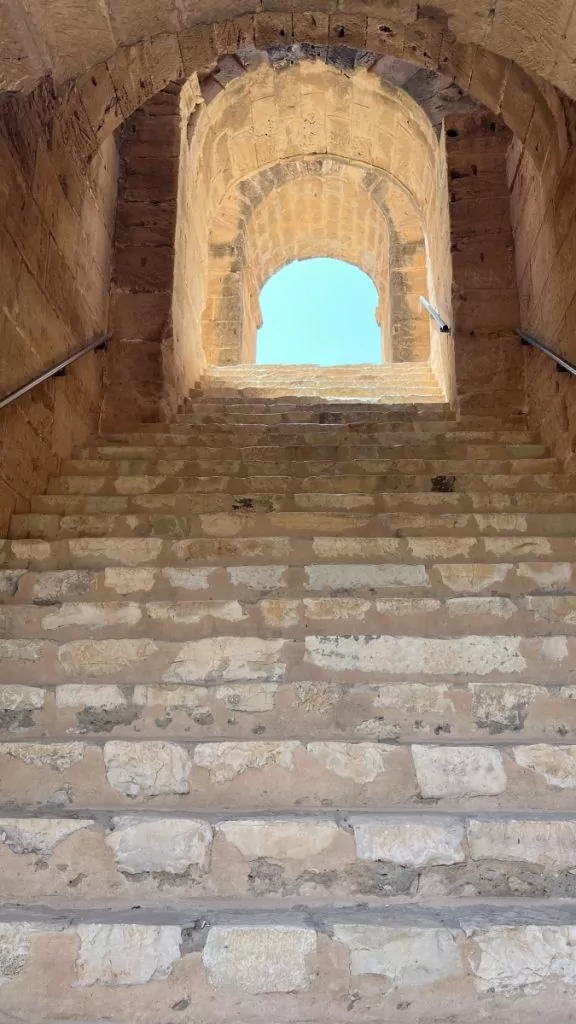
Visiting El Djem in Tunisia
A visit to the amphitheatre in El Djem is not to be missed during a visit to Tunisia. The theatre feels in many ways as impressive as the Colosseum in Rome, but it is much less crowded. The only thing we had to deal with at the entrance was a vendor trying to sell rides on dromedaries.

We were here on a press trip, together with some other travel writers, and started inside the amphitheatre itself. In the picture below you see, besides us, also Daniela and Göran from Discovering the Planet, Petra from Pellas Inspiration and Desirée from Desirée Travels.

After checking out the inside and downstairs, we headed upstairs. We climbed stair after stair, and the view got better and better all the time.


We took a selfie, looking towards the centre.
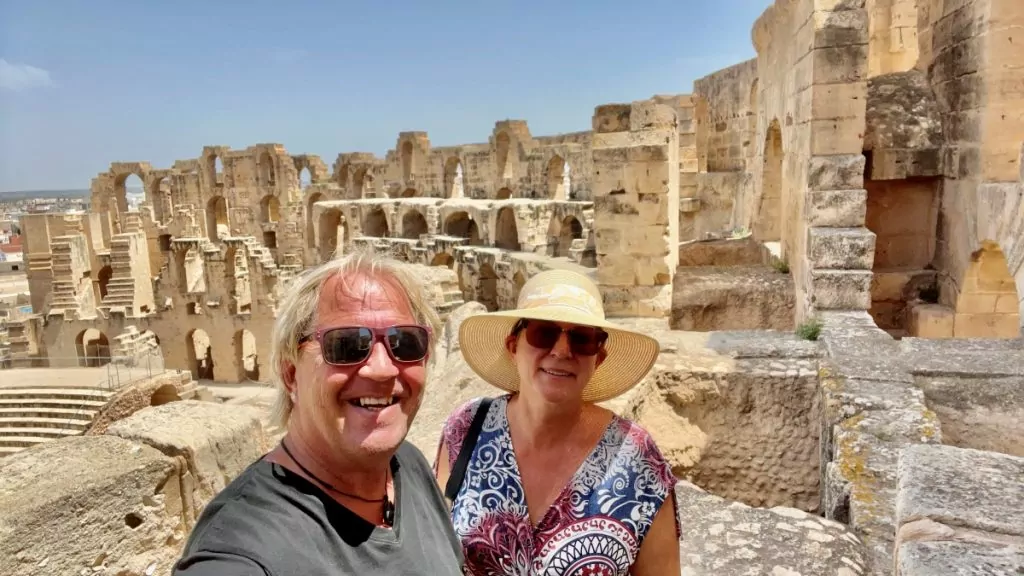
It was also great to walk around the aisles, which seemed endless in a way.

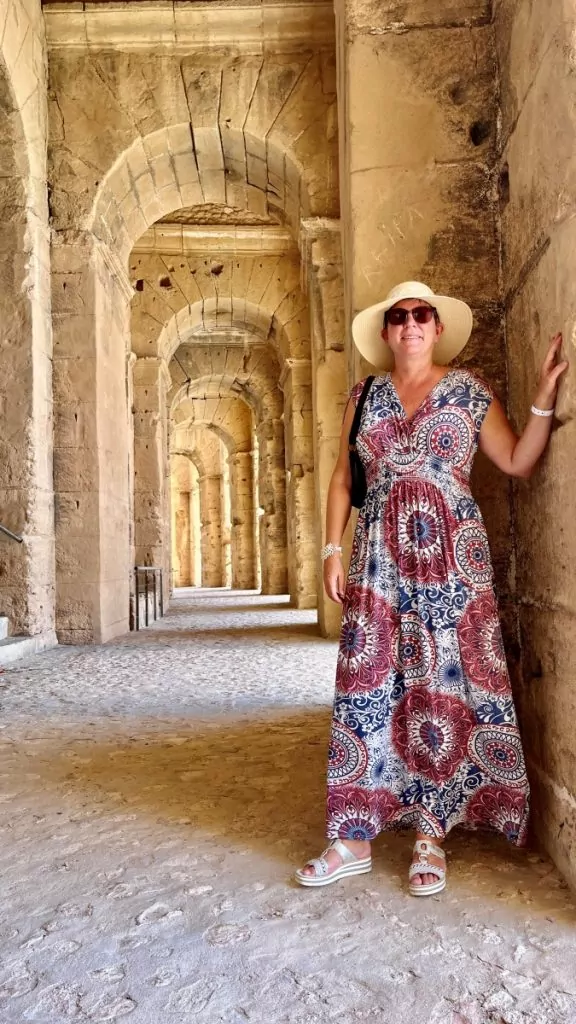
El Djem museum
In El Djem there is also a museum, and if you come here we would definitely recommend visiting it. The museum focuses on mosaics from the area, and it's really impressive to see.

Many mosaics are large, and several of them are also very well preserved.

The mosaics are in many cases very detailed and beautiful with contours, shadows and fine colour changes. As well as taking time to make, these mosaics must have been demanding on their artists.


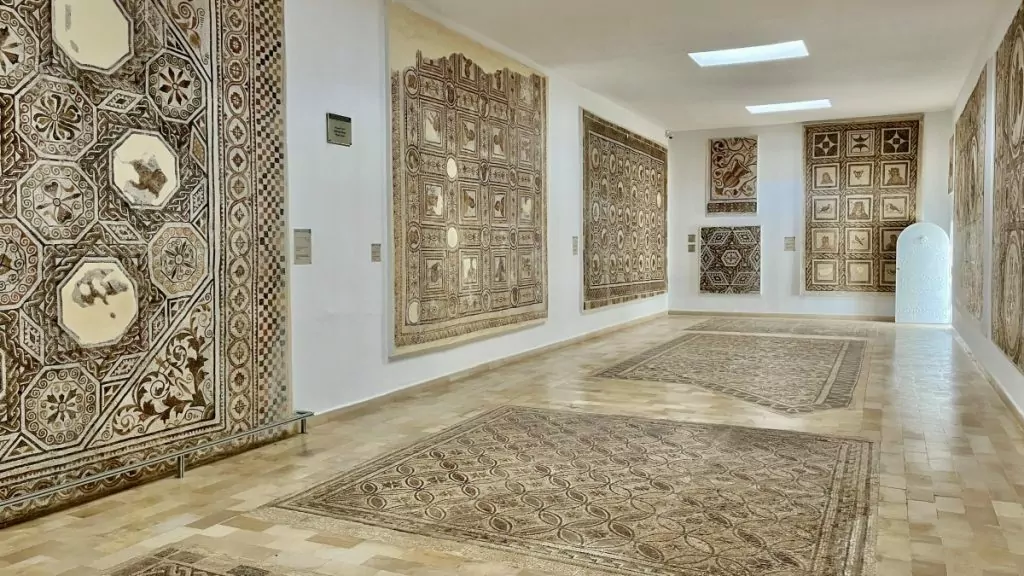
Most of the mosaics come from ancient high society homes in the area, and you just have to stick your nose out the door to see the ruins of these homes. In some cases, mosaics also remain in their original locations.

More to see in the neighbourhood
From the amphitheatre in El Djem, it is not far to Monastir, where you can experience the market and lovely boat trips to the Kuriat Islands. It is also not far to Sousse, which includes an old town, a market and beautiful beaches.
Carthage in Tunisia - archaeological site and World Heritage Site
Carthage is an archaeological site in Tunisia, and a neighbourhood outside the capital Tunis. Today,...
Living in tents in Tunisia - under the stars in the Sahara
Living in a tent in Tunisia is an experience. We stayed one night in a...
Facts about Tunisia - 30 things you (may) not know
Facts about Tunisia! Tunisia is known for its Roman ruins, among other things, and for...
Beer and wine culture in Tunisia
Guest writer: Jonathan Gharbi de Maré You might think of sunny beaches, golf and good food, but...
Djerbahood on the island of Djerba - amazing street art in Tunisia
Djerbahood on the island of Djerba in Tunisia offers charming neighbourhoods and amazing street art....
Alleys and bazaars in Tunis - shopping and people watching
We are still on the ground in Tunisia, but our journey is coming to an end...
Things to do in Sousse, Tunisia - 15 tips
What to do in Sousse, Tunisia? Sousse is a delightful and exciting holiday resort...
Quad biking in Tunisia - speedy experience in the Sahara
Quad biking in Tunisia is a wonderful experience. We went on a...
Thalassotherapy in Tunisia - Visits to two Thalasso & spas
We have tested thalassotherapy in Tunisia, which is a treatment that utilises...
What to do in Hammamet, Tunisia - 13 tips
What to do in Hammamet, Tunisia? Hammamet is a Tunisian Mediterranean resort that is...
What to do in Tunisia - 25 sights and experiences
What to see and do in Tunisia? This glorious Mediterranean country is perfect for sunbathing and...
Matmata in Tunisia - cave houses, Star Wars, viewpoints
Matmata in Tunisia is a small Berber village in southern Tunisia, where people have traditionally...
Camel riding in Tunisia - an island tour at the gateway to the Sahara
Camel riding in Tunisia, what is it like? There are lots of camels (or dromedaries) in...
Sidi Bou Said in Tunisia - the blue and white city
Sidi Bou Said in Tunisia is a small Mediterranean town known for its charming neighbourhoods and...
Tozeur in Tunisia - oases, adventure and Star Wars
Located in the western part of Tunisia, Tozeur serves as a starting point for desert adventures and...
Things to do in Djerba, Tunisia - 12 tips for the holiday island
What to do in Djerba, Tunisia? Djerba is a Tunisian island suitable for...
Boat trip to the Kuriat Islands in Tunisia - excursion from Monastir
Last summer we went on a boat trip to the Kuriat Islands, located off Monastir in Tunisia....

Have you visited El Djem in Tunisia?
Have you visited El Djem in Tunisia? Or perhaps you have visited some other exciting Roman amphitheatre? Do you like this kind of sights? Please tell us!
Facts about El Djem in Tunisia
- Location: The amphitheatre is located in the town of El Djem, about 6 miles south of Sousse.
- Name: El Djem or El Jem (Latin: Thysdrus)
- Behaviour: 230-238 AD
- Developer: Gordianus I
- Size: The theatre is approximately 148 metres long and 122 metres wide. The arena measures about 65 metres in length and about 39 metres in width. The walls are up to 30 metres high.
- Capacity: The theatre could accommodate up to 35,000 spectators.
- World Heritage: The site was added to the UNESCO World Heritage List in 1979.
- Use today: The site is shown to tourists and is also used for concerts and other cultural events.
Visiting El Djem - opening hours
- Opening hours during summer time: Approximately 1 May - 15 September. Every day 07:30 - 18:30.
- Opening hours during winter time: Approximately 16 September - 30 April. Every day 07:30 - 17:30.
- Opening hours during Ramadan: Every day from 08:00 to 17:00.





















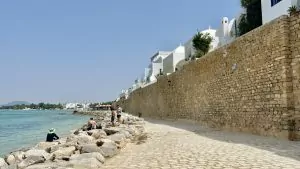





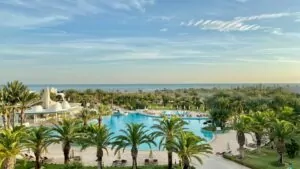


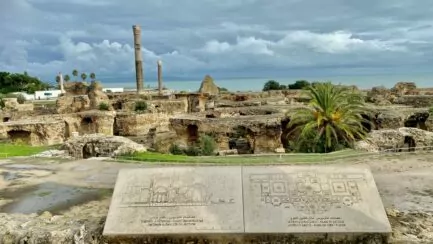







BP says:
It was a very impressive amphitheatre. Incredibly well preserved. I cannot imagine that any "modern" arena like Friends will be as old and in such good condition as this amphitheatre.
01 July 2023 - 19:21
Amanda (Swedish Passport) says:
No but wow so cool place! Many thanks for all the great tips 🙂
02 July 2023 - 9:22